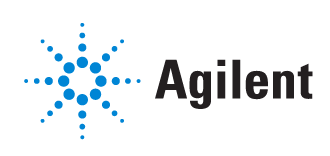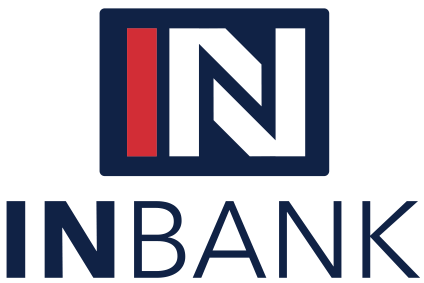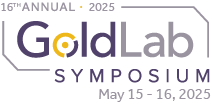

If you experience difficulty with the video you can Watch on YouTube
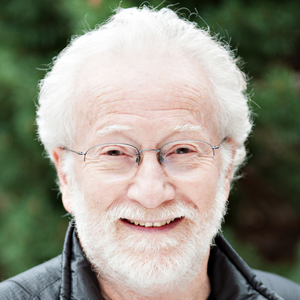
Dr. Larry Gold is the Founder of SomaLogic. Prior to SomaLogic, he also founded and was the Chairman of NeXagen, Inc., which later became NeXstar Pharmaceuticals, Inc. In 1999, NeXstar merged with Gilead Sciences, Inc. to form a global organization committed to the discovery, development and commercialization of novel products that treat infectious diseases.
During his nearly 10 years at NeXstar, Dr. Gold held numerous executive positions including Chairman of the Board, Executive Vice President of R&D, and Chief Science Officer. Before forming NeXagen, he also co-founded and served as Co-Director of Research at Synergen, Inc., a biotechnology company later acquired by Amgen, Inc. Dr. Gold recently became the CEO of Lab79, a new biotech company in Boulder, Colorado.
Since 1970, Dr. Gold has been a professor at the University of Colorado at Boulder. While at the University, he served as the Chairman of the Molecular, Cellular and Developmental Biology Department from 1988 to 1992. Between 1995 and 2013, Dr. Gold received the CU Distinguished Lectureship Award, the National Institutes of Health Merit Award, the Career Development Award, the Lifetime Achievement Award from the Colorado Biosciences Association, and the Chiron Prize for Biotechnology. Dr. Gold was also awarded the 8th International Steven Hoogendijk Prize by the Dutch Batavian Society of Experimental Philosophy in 2018.
In addition, Dr. Gold has been a member of the American Academy of Arts and Sciences since 1993 and the National Academy of Sciences since 1995. He is a fellow of the National Academy of Inventors. Dr. Gold also serves on the Board of Directors for CompleGen, Plato BioPharma, Lab79, Keck Graduate Institute, and the Biological Sciences Curriculum Study.
Dr. Gold established the Gold Lab at the University of Colorado Boulder in 1971. Starting with basic research on bacteria and bacteriophage, the lab shifted its focus to human disease following the invention of the SELEX process in 1989. The Gold Lab today focuses on the utilization of biological and information technology to improve healthcare. Dr. Gold also began holding the GoldLab Symposia in 2010, an annual event that tackles big questions in healthcare. He is determined to change healthcare for the better through teaching, research, and debate among scientists and citizens throughout the world.
Abstract
Abstract coming soon!
Abstract
 RNA molecules, and their regulation, are central to the functioning of human cells. Moreover, abnormalities in RNA regulation can lead to human disease. For example, in bone marrow failure diseases, such as dyskeratosis congenita, the telomerase RNA required for chromosome maintenance is abnormally degraded. Understanding this degradation mechanism has suggested possible therapies to reverse this process and provide treatment for this disease. Similarly, neurodegenerative diseases such as ALS and Alzheimer's disease involve alterations in proteins that regulate RNA, leading to RNA abnormalities in these diseases. Determining how RNA regulation is altered in these diseases is an important area of research, and determining how those alterations can be reversed may lead to new therapeutic approaches.
RNA molecules, and their regulation, are central to the functioning of human cells. Moreover, abnormalities in RNA regulation can lead to human disease. For example, in bone marrow failure diseases, such as dyskeratosis congenita, the telomerase RNA required for chromosome maintenance is abnormally degraded. Understanding this degradation mechanism has suggested possible therapies to reverse this process and provide treatment for this disease. Similarly, neurodegenerative diseases such as ALS and Alzheimer's disease involve alterations in proteins that regulate RNA, leading to RNA abnormalities in these diseases. Determining how RNA regulation is altered in these diseases is an important area of research, and determining how those alterations can be reversed may lead to new therapeutic approaches. Biography
Roy Parker is an Investigator with the Howard Hughes Medical Institute; Executive Director, BioFrontiers Institute; Cech-Leinwand Endowed Chair of Biochemistry and Distinguished Professor at the University of Colorado Boulder. He has a joint appointment with the Department of Molecular, Cellular and Developmental Biology. His research focuses on the translation, localization and degradation of eukaryotic RNA, how cells regulate different steps in this process to modulate gene expression, and how alterations in RNA regulation lead to human disease. He has served on, and chaired, the NIH CDF-1 study section, and co-organized the Nucleic Acids Gordon Conference (1997), the RNA Processing Meeting at CSHL (2001), and the 2004 FASEB Conference on Post-Transcriptional Control (2004). He is, or has been, on the editorial boards of MCB, Science, Cell, RNA, Nucleic Acids Research, and was an editor of the Journal of Cell Biology and eLife. He was the President of the RNA Society (2010). He is an elected Fellow of the American Academy of Arts & Sciences (2010) and Member of the National Academy of Sciences (2012). He received his Ph.D. from the University of California, San Francisco and completed his Postdoctoral work at the University of Massachusetts, Worcester.
Abstract
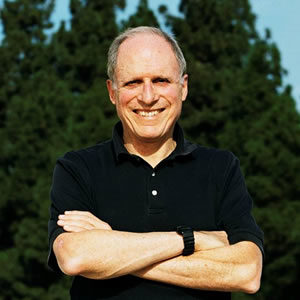 Failing the development of effective drugs for Alzheimer’s disease (AD), millions are destined to die with dementia. AD is the consequence of neuronal death and brain atrophy associated with the aggregation of protein tau into fibrils. This suggests that disaggregation of tau fibrils could be a therapeutic approach to AD. The capacity for the polyphenolic small molecule EGCG, abundant in green tea, to disaggregate tau and other amyloid fibrils has long been known, but EGCG has poor drug-like properties and fails to fully penetrate the brain. Here we have cryogenically trapped a high-energy intermediate of brain-extracted tau fibrils on the kinetic pathway to EGCG-induced disaggregation and have determined its cryoEM structure. The structure reveals that EGCG molecules stack in polar clefts between the paired helical protofilaments that pathologically define AD. Treating the EGCG binding position as a pharmacophore, we computationally screened thousands of drug-like compounds for compatibility for the pharmacophore, discovering several that experimentally disaggregate brain tau fibrils. This work suggests the potential of structure-based, small-molecule drug discovery for amyloid diseases, perhaps portending chemical interventions for Alzheimer’s akin to those so effective for treating cancer and metabolic disorders.
Failing the development of effective drugs for Alzheimer’s disease (AD), millions are destined to die with dementia. AD is the consequence of neuronal death and brain atrophy associated with the aggregation of protein tau into fibrils. This suggests that disaggregation of tau fibrils could be a therapeutic approach to AD. The capacity for the polyphenolic small molecule EGCG, abundant in green tea, to disaggregate tau and other amyloid fibrils has long been known, but EGCG has poor drug-like properties and fails to fully penetrate the brain. Here we have cryogenically trapped a high-energy intermediate of brain-extracted tau fibrils on the kinetic pathway to EGCG-induced disaggregation and have determined its cryoEM structure. The structure reveals that EGCG molecules stack in polar clefts between the paired helical protofilaments that pathologically define AD. Treating the EGCG binding position as a pharmacophore, we computationally screened thousands of drug-like compounds for compatibility for the pharmacophore, discovering several that experimentally disaggregate brain tau fibrils. This work suggests the potential of structure-based, small-molecule drug discovery for amyloid diseases, perhaps portending chemical interventions for Alzheimer’s akin to those so effective for treating cancer and metabolic disorders.Biography
David Eisenberg has been on the faculty of UCLA since 1969, now as the Paul D. Boyer Professor of Biochemistry and Molecular Biology and as Investigator of the Howard Hughes Medical Institute. Beginning in 1999, Eisenberg concentrated on studies of prions and proteins in the amyloid state.
As a Harvard undergraduate, Eisenberg studied with Professor John T. Edsall, one of the pioneers of protein chemistry, who oriented his life’s work. As a Rhodes Scholar at Oxford, Eisenberg earned a DPhil in theoretical chemistry for study with Professor Charles Coulson on hydrogen bonding in ice. Returning to the United States, Eisenberg worked as a postdoctoral fellow at Princeton with Professor Walter Kauzmann, the discoverer of the hydrophobic interaction. Together they wrote a monograph, The Structure and Properties of Water, still in print after 51 years. In a second postdoctoral fellowship at the California Institute of Technology, Eisenberg learned X-ray crystallography from Professor Richard Dickerson (who later joined the UCLA Department of Chemistry & Biochemistry faculty in 1981).
Eisenberg is a member of several scholarly societies, including the US National Academy of Sciences, the American Academy of Arts and Sciences, the National Academy of Medicine, and the American Philosophical Society. He has received the Harvard Westheimer Medal, the UCLA Seaborg Medal, the Harvey International Prize in Human Health, the Bert and Natalie Vallee Award in Biomedical Science, the 2020 Passano Award and is an honorary fellow of Queen’s College, Oxford.
Abstract
Abstract coming soon!
Abstract
Abstract coming soon!
Abstract
 The phenotypic, genetic, and environmental characteristics that define a given disease are established in different demographics, regions, contexts, and databases. Different knowledge sources model the attributes of a disease and their relationships differently. For example, one resource may include the variant-to-disease association, whereas another records only the phenotypic features and their onset associated with the disease. Further, patients are an often underrecognized source of disease knowledge. As our collective knowledge advances, there is also a philosophical debate about what constitutes a disease, and when to “lump” or “split.” Our analysis has revealed that prior estimates of the number of rare diseases, at ~7,000, dating back to the 1983 United States Orphan Drug Act, grossly underestimated the number by approximately 3,000 diseases. A rare disease harmonization initiative, Mondo, aims to reconcile rare disease knowledge globally. Patient-level characterization supports improved data sharing and disease definition. The end result is a suite of resources that can be used in diagnostic and discovery tools, where every patient will have an equal opportunity for a diagnosis no matter where they live.
The phenotypic, genetic, and environmental characteristics that define a given disease are established in different demographics, regions, contexts, and databases. Different knowledge sources model the attributes of a disease and their relationships differently. For example, one resource may include the variant-to-disease association, whereas another records only the phenotypic features and their onset associated with the disease. Further, patients are an often underrecognized source of disease knowledge. As our collective knowledge advances, there is also a philosophical debate about what constitutes a disease, and when to “lump” or “split.” Our analysis has revealed that prior estimates of the number of rare diseases, at ~7,000, dating back to the 1983 United States Orphan Drug Act, grossly underestimated the number by approximately 3,000 diseases. A rare disease harmonization initiative, Mondo, aims to reconcile rare disease knowledge globally. Patient-level characterization supports improved data sharing and disease definition. The end result is a suite of resources that can be used in diagnostic and discovery tools, where every patient will have an equal opportunity for a diagnosis no matter where they live. Biography
Melissa Haendel is the Chief Research Informatics Officer at University of Colorado Anschutz Medical School, and Director of the Center for Data to Health (CD2H). Her background is molecular genetics, developmental biology, and toxicology as well as translational informatics, with a focus over the past decade on open science and semantic engineering. Dr. Haendel’s vision is to weave together healthcare systems, basic science research, and patient generated data through development of data integration technologies and innovative data capture strategies. Dr. Haendel’s research has focused on integration of genotype-phenotype data to improve rare disease diagnosis and mechanism discovery.
Abstract
 Knowledge of protein structure significantly aids in the investigation of macromolecular function, interactions, and biochemical pathways. It also impacts our understanding of human disease, and the development of therapeutics.
Knowledge of protein structure significantly aids in the investigation of macromolecular function, interactions, and biochemical pathways. It also impacts our understanding of human disease, and the development of therapeutics.Biography
Krzysztof Fidelis is Co-Founder (with John Moult, 1994) of the Critical Assessment of Structure Prediction initiative (CASP) to evaluate modeling methods in structural biology. He also heads the Protein Structure Prediction Center, first at Lawrence Livermore National Laboratory (1994-2005), and then at UC Davis (2005-present). CASP is designed to advance the modeling of protein structure by conducting community-wide assessments that determine the strengths and weaknesses of current methods and so foster progress. The Prediction Center provides the infrastructure for these evaluations. Currently, the fifteenth biennial assessment is underway. Approximately one hundred research groups world-wide participate, with over 67,000 submissions on approximately one hundred protein modeling targets submitted in the last round.
To help navigate through structure similarities in proteins, Krzysztof’s group introduced the local structure descriptors, defined as amino acid-attached structure context. Their mid-level range of granularity allows for characterizing structure in “modules” that are small and common enough to be found in many proteins. The formalism was applied in several areas, including identification of structure similarity, fold recognition, enzyme-ligand interactions, and structure-function relationships.
Although the primary thrust of his research is in development of methods for structure modeling assessment, he has participated in several collaborations in applied modeling, for example producing the structural models for the Rad1 cell cycle checkpoint proteins, later confirmed by experiment.
Krzysztof’s group has also used genome-wide yeast binding-site and microarray expression data to show the combinatorial nature of gene regulation. These results provided specific data on how binding sites may be combined to allow a large number of expression outcomes using relatively few transcription factors.
Abstract
Abstract coming soon!
Abstract
Abstract coming soon!
Abstract
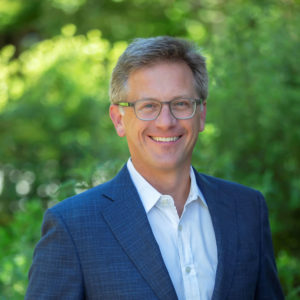 The revolutions in biotechnology (CRISPR and genetic editing) and information technology (artificial intelligence) call into question nothing less than what it means to be human and the place of humans in the natural world. Rapid acceleration on the technological frontier makes it less likely that democratic regulation will be up to the task of installing sensible guardrails so that these revolutions support rather than subvert human interests and democratic stability. As a result, we must look to professional norms within bioengineering and computer science to help steer us. Are these up to the task?
The revolutions in biotechnology (CRISPR and genetic editing) and information technology (artificial intelligence) call into question nothing less than what it means to be human and the place of humans in the natural world. Rapid acceleration on the technological frontier makes it less likely that democratic regulation will be up to the task of installing sensible guardrails so that these revolutions support rather than subvert human interests and democratic stability. As a result, we must look to professional norms within bioengineering and computer science to help steer us. Are these up to the task?Biography
Rob Reich is a philosopher, the director of Stanford University’s Center for Ethics in Society, co-director of the Center on Philanthropy and Civil Society, and associate director of its new Institute for Human-Centered Artificial Intelligence. He is a leading thinker at the intersection of ethics and technology, the author of Just Giving: Why Philanthropy is Failing Democracy and How It Can Do Better. A former sixth grade teacher, he has won multiple teaching awards at Stanford. He helped to create the global movement #GivingTuesday and serves as chair of its board.
Abstract
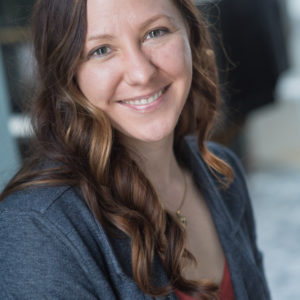 In the literature and practice of medicine, especially chronic, palliative, and end-of-life care, spirituality and spiritual care are known to be of fundamental importance to patients’ wellbeing. Yet the healthcare institution is ill-equipped to provide affordable and equitable access to sufficient spiritual and mental health care for all patients. With ever-rising rates of mental illness, overdose, and suicide in a world shattered by pandemic, war, and societal fragmentation, what can be done to support the spiritual healing–and moreover thriving–of both individuals and society?
In the literature and practice of medicine, especially chronic, palliative, and end-of-life care, spirituality and spiritual care are known to be of fundamental importance to patients’ wellbeing. Yet the healthcare institution is ill-equipped to provide affordable and equitable access to sufficient spiritual and mental health care for all patients. With ever-rising rates of mental illness, overdose, and suicide in a world shattered by pandemic, war, and societal fragmentation, what can be done to support the spiritual healing–and moreover thriving–of both individuals and society?Biography
Dr. C. Estelle Smith (estellesmithphd.com) is a Postdoctoral Associate at the University of Colorado Boulder in the Department of Information Science. With an emphasis in Human-Computer Interaction and Social Computing, Estelle completed her PhD in Computer Science in the GroupLens Research Lab (grouplens.org) at the University of Minnesota in 2020. Through industry and interdisciplinary partnerships with organizations like CaringBridge, the Wikimedia Foundation, and Reddit, Estelle’s research explores online systems, communities, and Data Science or Artificial Intelligence and Machine-Learning (AI/ML)-based mechanisms for improving mental and spiritual wellbeing during health crises. Her work has received three awards at prestigious computing venues, including the CHI and CSCW conferences. Estelle employs a Human Centered Design approach that uses qualitative, quantitative, and mixed methods to evaluate stakeholders’ values, needs, and behaviors, and to design future sociotechnical innovations that can support spiritual healing and flourishing, even in the face of life-critical illness. Apart from work, Estelle is an avid outdoor enthusiast who loves venturing out into the mountains to rock climb, ski, bike, yoga, and hike with her wonderful Siberian husky, Zosima. Contact her on Twitter at @EstelleSmithPhD or send an email to c.estelle.smith@colorado.edu.
Abstract
 David will share about his journey from fighting for survival against idiopathic multicentric Castleman disease (iMCD) during medical school to conducting research leveraging the SOMAscan proteomic platform and ultimately collaborating with dozens of physicians, researchers, and patients to accelerate progress for Castleman disease patients worldwide. His presentation highlights the incredible power when patients, physicians, advocates, researchers, caregivers, biopharmaceutical companies, and drug regulators unite to leverage cutting-edge technologies and turn our hope into action.
David will share about his journey from fighting for survival against idiopathic multicentric Castleman disease (iMCD) during medical school to conducting research leveraging the SOMAscan proteomic platform and ultimately collaborating with dozens of physicians, researchers, and patients to accelerate progress for Castleman disease patients worldwide. His presentation highlights the incredible power when patients, physicians, advocates, researchers, caregivers, biopharmaceutical companies, and drug regulators unite to leverage cutting-edge technologies and turn our hope into action. Biography
David Fajgenbaum is a physician-scientist at the University of Pennsylvania, Founding Director of the Center for Cytokine Storm Treatment & Laboratory (CSTL), Associate Director of the Penn Orphan Disease Center, and Co-Founder & President of the Castleman Disease Collaborative Network (CDCN). He is also the national bestselling author of ‘Chasing My Cure: A Doctor’s Race to Turn Hope Into Action‘ and a patient battling idiopathic multicentric Castleman disease (iMCD). He is in his longest remission ever thanks to a precision treatment that he identified, which had never been used before for iMCD. An authority on cytokine storms and their treatment, Fajgenbaum leads over 20 translational research studies including the CORONA Project, which is the world’s largest effort to identify, track, and advance COVID-19 treatments.
Fajgenbaum has published scientific papers in high-impact journals such as the New England Journal of Medicine, Journal of Clinical Investigation, and Lancet. He currently serves on the Board of Directors for the Reagan-Udall Foundation for the FDA, Co-Chair of the Advisory Board for the CURE Drug Repurposing Collaboratory, and Co-Chair of the Scientific Advisory Board for the CDCN. Dr. Fajgenbaum earned a B.S. from Georgetown University, M.Sc from the University of Oxford, M.D. from the University of Pennsylvania, and MBA from The Wharton School.

Dr. Larry Gold is the Founder of SomaLogic. Prior to SomaLogic, he also founded and was the Chairman of NeXagen, Inc., which later became NeXstar Pharmaceuticals, Inc. In 1999, NeXstar merged with Gilead Sciences, Inc. to form a global organization committed to the discovery, development and commercialization of novel products that treat infectious diseases.
During his nearly 10 years at NeXstar, Dr. Gold held numerous executive positions including Chairman of the Board, Executive Vice President of R&D, and Chief Science Officer. Before forming NeXagen, he also co-founded and served as Co-Director of Research at Synergen, Inc., a biotechnology company later acquired by Amgen, Inc. Dr. Gold recently became the CEO of Lab79, a new biotech company in Boulder, Colorado.
Since 1970, Dr. Gold has been a professor at the University of Colorado at Boulder. While at the University, he served as the Chairman of the Molecular, Cellular and Developmental Biology Department from 1988 to 1992. Between 1995 and 2013, Dr. Gold received the CU Distinguished Lectureship Award, the National Institutes of Health Merit Award, the Career Development Award, the Lifetime Achievement Award from the Colorado Biosciences Association, and the Chiron Prize for Biotechnology. Dr. Gold was also awarded the 8th International Steven Hoogendijk Prize by the Dutch Batavian Society of Experimental Philosophy in 2018.
In addition, Dr. Gold has been a member of the American Academy of Arts and Sciences since 1993 and the National Academy of Sciences since 1995. He is a fellow of the National Academy of Inventors. Dr. Gold also serves on the Board of Directors for CompleGen, Plato BioPharma, Lab79, Keck Graduate Institute, and the Biological Sciences Curriculum Study.
Dr. Gold established the Gold Lab at the University of Colorado Boulder in 1971. Starting with basic research on bacteria and bacteriophage, the lab shifted its focus to human disease following the invention of the SELEX process in 1989. The Gold Lab today focuses on the utilization of biological and information technology to improve healthcare. Dr. Gold also began holding the GoldLab Symposia in 2010, an annual event that tackles big questions in healthcare. He is determined to change healthcare for the better through teaching, research, and debate among scientists and citizens throughout the world.

